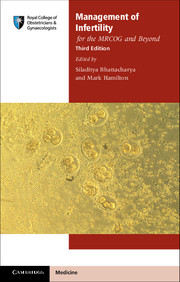
- Cited by 1
-
Cited byCrossref Citations
This Book has been cited by the following publications. This list is generated based on data provided by Crossref.
Girase, Tejasweeni Patil, Javesh Tatiya, Aayushi Patil, Devyani and Patil, Mamta 2023. Clomiphene Citrate as Nanomedicine Assistance in Ovulatory Disorders and Its Hyphenated Techniques. p. 6.
- Publisher:
- Cambridge University Press
- Online publication date:
- June 2014
- Print publication year:
- 2014
- Online ISBN:
- 9781107445178


